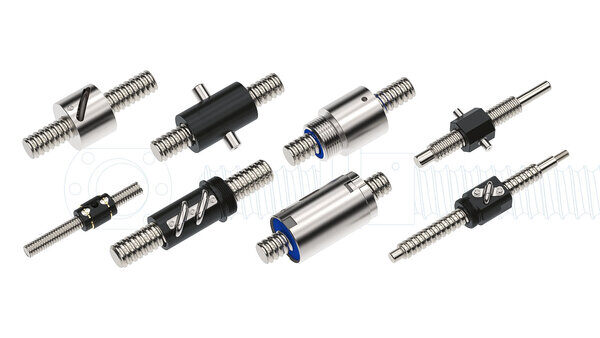A Comprehensive Guide to Understanding Ball Screws
In precision engineering, ball screws play a crucial role in translating rotational motion into linear motion with high efficiency and accuracy. They are fundamental components in a wide array of machinery for various industries. Understanding ball screws is essential for anyone involved in design, manufacturing or maintenance of systems that require precise linear motion control.

Types of ball screws
Within the wide selection of linear motion screws, there are multiple types of ball screws including:
- Rolled ball screws
- Whirled ball screws
- Ground ball screws
- Miniature ball screws
There are a few different characteristics between rolled ball screws and precision ground ball screws within the fabrication process. While rolled ball screws are created using rolling dies, ground ball screws are manufactured using an abrasive grinding process.
The cost between the two types of ball screws typically differs. Rolled ball screws are usually more cost-effective and accessible than ground ball screws. However, ground ball screws are more desirable for machinery that requires increased precision due to their higher accuracy.
Benefits of using ball screws
Both types of ball screw offer efficiency and low friction, resulting in increased mechanical performance for various applications in multiple industries. With their lack of friction in the process, ball screws are crucial for producing smooth and seamless applications.
Other benefits of using ball screws include:
- Precision
- Repeatability
- Load-bearing
- Long service life (with proper maintenance)
Applications of ball screws
The different types of ball screws are used in a wide range of applications across various industries. With many sectors demanding precise and accurate technology, ball screws are essential for ensuring peak performance.
One of the main examples that uses ball screws for their high-tech characteristics is machine tools. Balls screws are used to provide linear motion that is required in many different types of machines including lathes, milling machines and other computer numerical control (CNC) machines.
Robotics
Ball screws are also used in various types of robotic applications due to their smooth and accurate characteristics. You can find them in many robotic arms and legs, giving these unique technological advancements the ability to move.
In many aircraft control systems, you can find ball screws due to their accuracy and low friction tendencies. Ball screws can also be found in many other aerospace applications.
Ball screws can be found in various medical devices due to their increased reliability in comparison to other screw options. Specifically, the balls screws can be found in imaging tools and surgical robots.
The different types of ball screws can be found in many different processes throughout the automotive industry. These components are used in automotive manufacturing, as well as assembly lines and unique robotic systems.
Factors to consider when choosing ball screws
Before choosing which ball screw to utilize, it is important to consider the different factors that may play a role in the decision process. A few of the considerations include:
- Lead accuracy
- Axial clearance and preload
- Critical speed
- Rotational speed of the nut
Lead accuracy
While this may be a detailed process due to the specifications, taking the time to consider this information before installation will benefit your applications. Typically, rolled ball screws have an accuracy between G9 and G5. If higher accuracy is required, ground ball screws provide the increased precision needed for those applications.
Axial clearance
While reduced clearances are possible, typically an axial clearance is between the ranges of 50 to 100 microns for rolled ball screws. If needed, backlash can be reduced or eliminated by selecting a specific ball screw.
Critical speed
The concept of critical speed refers to the maximum rotational speed at which a shaft can operate without experiencing excessive vibration or instability. This speed depends on the mounting configuration and the properties of the shaft itself.
Rotational speed of the nut
Rolled ball screws have a lower maximum nut rotational speed, while ground ball screws offer a higher maximum rotational speed. With technological advancements, the specific rotational speed of each ball screw nut continues to increase.
Conclusion
Ball screws are indispensable components in precision engineering, providing efficiency, accuracy and load-bearing capacity. Their unique recirculating ball mechanism not only minimizes friction but also ensures high precision and repeatability, making them essential in industries ranging from robotics and aerospace to medical devices and CNC machining. Ball screws are a cornerstone of modern engineering, enabling advancements in technology and manufacturing. Whether you're designing a new machine, maintaining existing equipment or simply expanding your technical knowledge, a solid understanding of ball screws can be invaluable.


